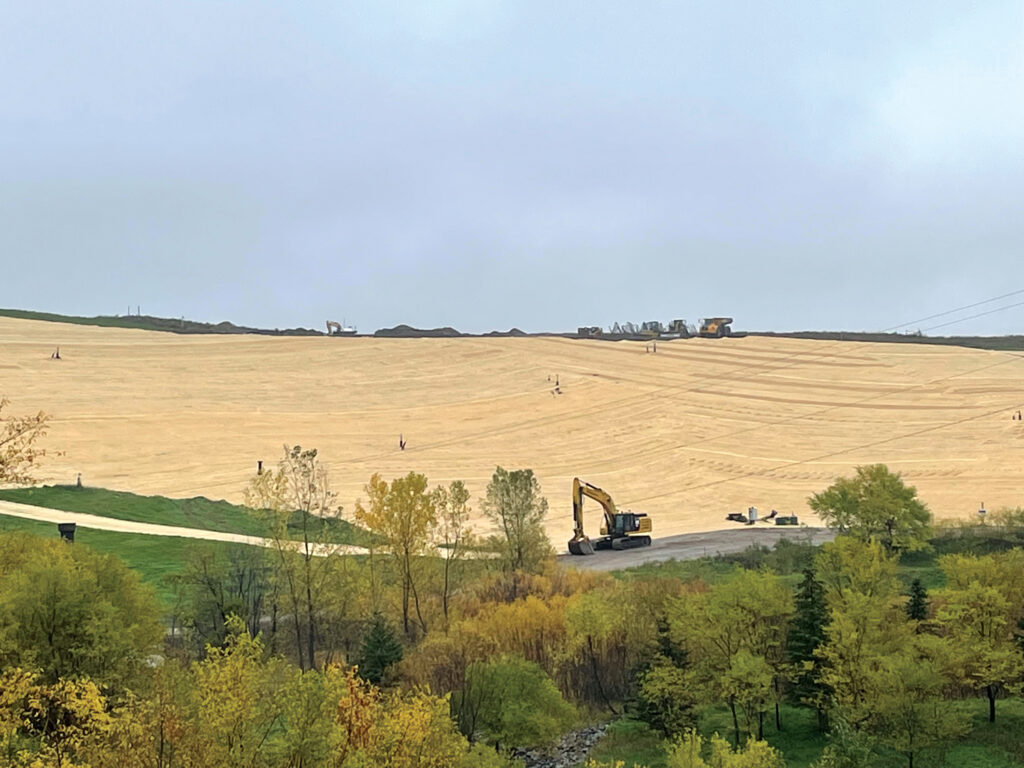
Erosion control, sediment control and revegetation are common at landfills. Erosion Control Technology Council (ECTC) is a leading industry organization home to top manufacturers of erosion and sediment control products, component suppliers, material distributors and test laboratories. ECTC members are dedicated to advancing the knowledge, experience and expertise of erosion and sediment control. The nonprofit organization’s mission is to develop performance standards, uniform testing procedures and guidance on the application and installation of hydraulic erosion control products (HECPs), rolled erosion control products (RECPs) and sediment retention fiber rolls (SRFRs). ECTC recently expanded its reach to other technologies as well and promotes the use of erosion and sediment control products through industry leadership and education in the hope of making a substantial contribution to the science of erosion control and environmental preservation.
Product solutions and guidance are commonly provided to landfills by ECTC members. Landfills come in various sizes and types, but all of them require erosion control and revegetation at points throughout their lives. ECTC’s toolbox of specifications and applicable products, which have been verified through standardized industry testing, are perfect fits for the challenges of the landfill world. Also located in ECTC’s online toolbox are CAD installation drawings, installation instructions, how-to installation videos and fact sheets about each technology type.
Daily covers at landfills, required by federal regulations, are used to help hold down trash at the end of each day, maintain overall sanitary conditions, and prevent odors, disease and vermin. Alternative daily covers (ADCs) are materials other than soil that are used at landfills as daily covers. Traditionally, around 6 inches (15.2 cm) of soil has been used for daily cover at landfills, but there are other options that extend cell life by adding less cover material each day.
There is a variety of hydraulically applied ADCs used at landfills. Hydraulically applied ADCs may differ from the slurry configurations used for erosion control and/or revegetation purposes, but their application is similar. Another ADC option is a geomembrane, which comes in roll form similar to RECPs. Geomembranes provide many performance benefits; they help maximize cell life by not contributing daily accumulation to the landfill surface; and they are reusable.

Active and capped landfills may have needs to convey water safely without eroding the landscape. Degradable RECPs are known as erosion control blankets (ECBs) and have permissible shear stress ratings up to 2.25 pounds/square foot (11.0 kg/m2) according to ASTM D6460 testing and work well for channelized flow applications within their design parameters. If long-term protection and/or reinforcement is desired, turf reinforcement mats (TRMs), containing stabilized synthetic components, provide a minimum unvegetated permissible shear stress rating of 2.0 pounds/square foot (9.8 kg/m2) according to D6460. In addition, vegetated TRMs have vegetated permissible shear stress ratings up to 14.0 pounds/square foot (68.4 kg/m2). Under verified conditions, TRMs may be suitable replacements to rock riprap channels and down chutes at landfills.
TRMs are also regularly utilized to reinforce vegetation in ditches next to haul roads at landfill operations. Vegetated TRM solutions provide a soft, green option with several benefits as compared to riprap and hard armor. Benefits of vegetated TRMs include but are not limited to:
- Aesthetics
- Safety (vegetation is softer to land
in than rock) - Easier accessibility and maintenance
- Temperature of runoff (pollution of waterbodies with heated runoff can occur with riprap and hard armors)
- Temperature of land (vegetated swales are cooler than hard armor channels that create heat islands)
- Stormwater quality improvements have been quantified with vegetated swales due to natural filtration properties
- Infiltration occurs with vegetation to keep water within the watershed
- Carbon sequestration comes with vegetation
- Pollinator corridors and wildlife habitat are common with vegetated TRMs
- TRMs require less destructive installation
- TRMs installations return sites to preconstruction vegetated conditions unlike imported rock or unnatural hard armor options
Shipping and installation of TRMs require significantly less transportation and use of heavy machinery. Despite all these benefits, vegetated TRM solutions generally are much less expensive than installed riprap or hard armor solutions.
HECPs and RECPs are commonly used during final landfill capping processes that require erosion control and revegetation. Steeper and longer landfill slopes are matched with solutions that are suitable for the design requirements, which are commonly RECPs. However, SRFRs and other sediment control products are also common tools used at landfills especially with increased slope lengths. SRFRs help break up the effective slope length and reduce concentrated flow conditions from developing on the landfill slopes. Concentrated flow channels at landfills may also utilize filtering SRFRs (those with a flow rate of at least 35 gallons per minute/square foot [1,420 lpm/m2]) to help remove contaminants and reduce flow velocity as a secondary benefit.
Landfills use a variety of erosion control, sediment control and revegetation solutions. Thus, several different products provided by ECTC members are frequently used at landfills throughout their life cycle.
Please contact Jon Curry (jcurry@erosioncouncil.org), ECTC executive director, with any questions or comments regarding this article. He will be sure to communicate your questions or comments to ECTC membership and provide a timely response.
 TEXTILES.ORG
TEXTILES.ORG


